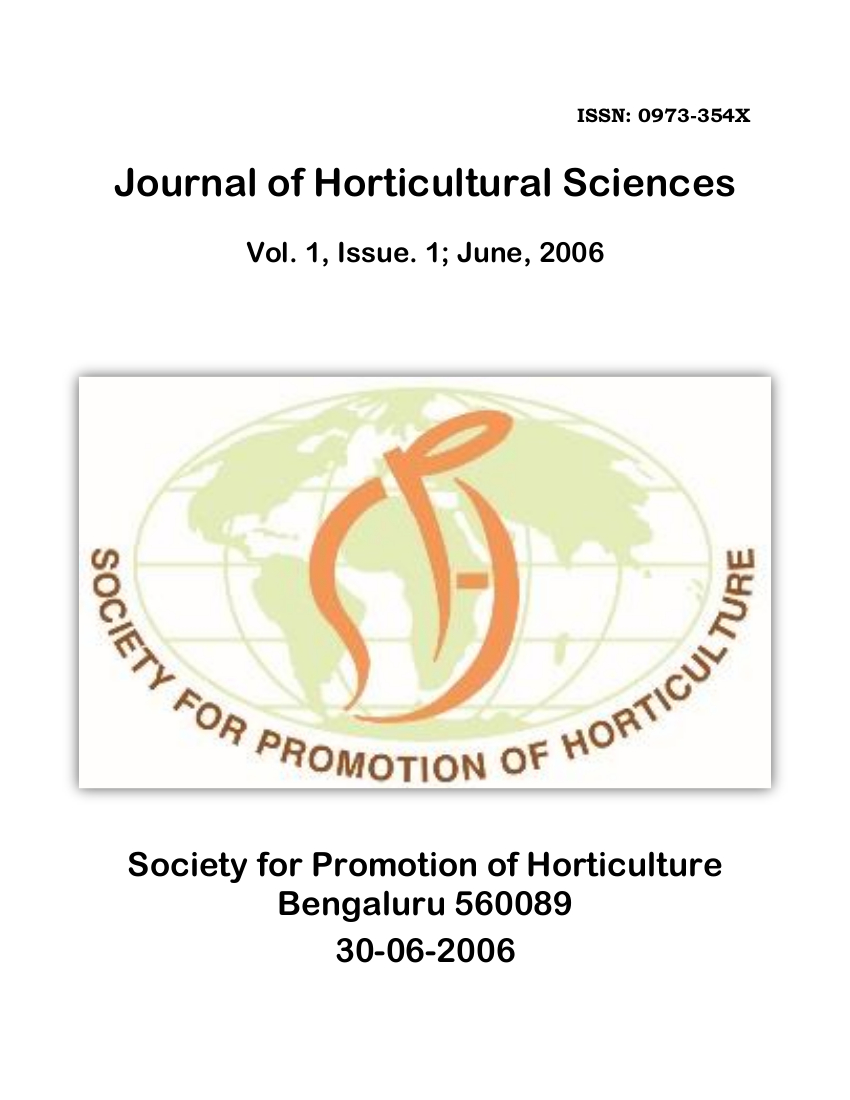Studies on the Extent of Genetic Contamination in Seed Production of Ridge Gourd (Luffa acutangula Roxb.)
DOI:
https://doi.org/10.24154/jhs.v1i1.675Keywords:
Cucurbits, Genetic Purity, Isolation, Ridge Gourd, Seed ProductionAbstract
Studies were conducted during 2002-2005 (Rabi season) to evaluate the extent of genetic contamination in round fruited ridge gourd (recessive) vehen grown for seed production under open field conditions. The round fruited ridge gourd was sown at 200 m, 400 m, 600 m and 800 m distance from Arlia Sumeet (long fruited) which acted as the local marker (dominant). The highest percentage of genetic contamination was recorded at a distance of 200 m from the contaminator (Arka Sumeet) (28.62% and 88.1%, respectively, in the years 2003 and 2005). It was also observed that there was a gradual reduction in contamination level with increasing distance from 28.62 to 17.44% at 600 m distance in 2003 and 88.11% at 800 m to 74.23% in 2005. The lowest percentage of contamination was recorded at the highest isolation distance (at 600 m, 17.44% in 2003 and at 800 m, 74.24% in 2005), although it is not within the prescribed maximum permissible limit of genetic contamination (1 and 2% for foundation and certified seed respectively). In the present study, in all the isolation distances studied, the level of contamination is well above the permissible minimum seed certification standards (99 and 98 % genetic purity for Foundation and Certified seed respectively). Hence, any reduction in the isolation distance from the prescribed (800 m) isolation would drastically affect the genetic purity of ridge gourd for seed production under open field conditions.
Downloads
References
Agarwal, P. K. 1993. Handbook of seed testing. Ministry of Agriculture. GOI, New Delhi. 130p.
Agarwal, P. K. and Dadlani, M. 1987. Techniques in seed scienceandtechnology of Ridge gourd. South Asian Publishers, New Delhi. 190p
Ahemed, N, Khan,S. H and Baseerat. 2004. Hybrid vegetables: A Historical perspective, preset status and future prospects, pp 1-9. In: Recent advances in hybrid seed production of important vegetables. Sher-e-Kashmir University of Agricultural Sciences and Technology, Srinagar (India),
Economic Survey of India. 2005. Ministry of Agriculture and Cooperation, New Delhi. http:// indiabudget.nic.in Prem Singh Arya. 1999. Vegetable seed production-principles. Kalyani Publishers, pp 78-82.
Radha Krishna Maiya, Basave Gowda, Shekhara Gouda, M. and Khadi, B.M. 2001. Isolation distance in cotton (Gossypium arboreum). Seed Res., 29:245- 247.
Robinson, R.W. 1999. Rationale and methods for producing hybrid cucurbit seed. J. New Seeds, 1:1-47.
Rosa, J..T. 1924. Pollination and fruiting habit in the cantaloupe. Proc. Amen Soc. Hort. Sci., 21:51.
Singh, RK and Das gupta, S. K. 2005. Hybrid Loofah. / A^^H' Seeds, 6:2-3
Tumwar N .S. and Singh S.V. 1988.1ndian minimum seed certification standards. Central Seed Certification Board, New Delhi. pp:221-222.
Downloads
Published
Issue
Section
License
Copyright (c) 2006 K Padmini, L B Naik (Author)

This work is licensed under a Creative Commons Attribution-NonCommercial-ShareAlike 4.0 International License.
Authors retain copyright. Articles published are made available as open access articles, distributed under the terms of the Creative Commons Attribution-NonCommercial-ShareAlike 4.0 International License, which permits unrestricted non-commercial use, distribution, and reproduction in any medium, provided the original author and source are credited. 
This journal permits and encourages authors to share their submitted versions (preprints), accepted versions (postprints) and/or published versions (publisher versions) freely under the CC BY-NC-SA 4.0 license while providing bibliographic details that credit, if applicable.





 .
. 











